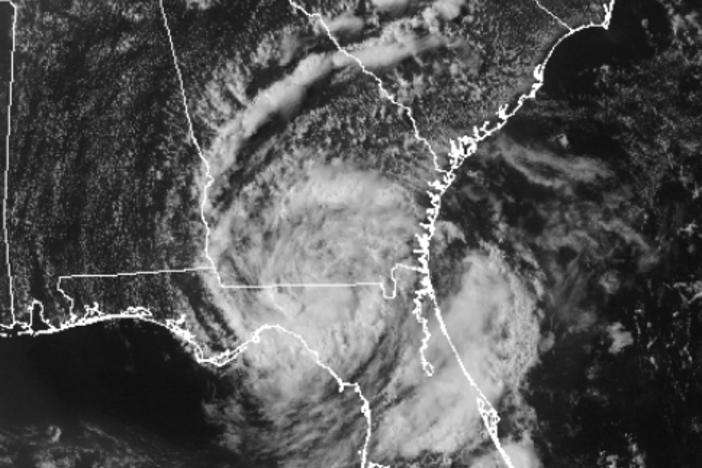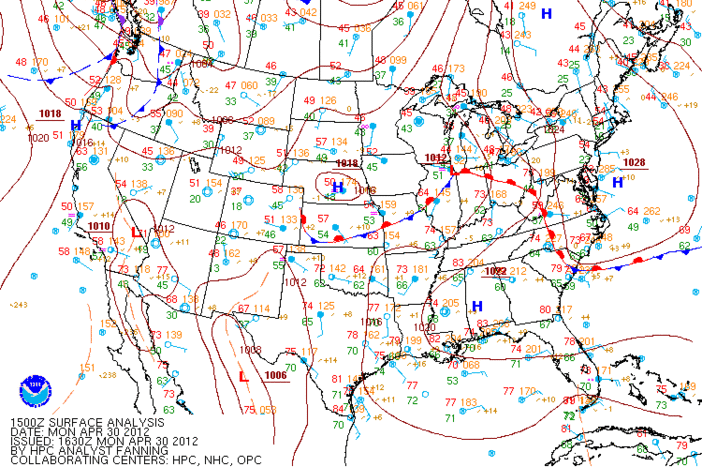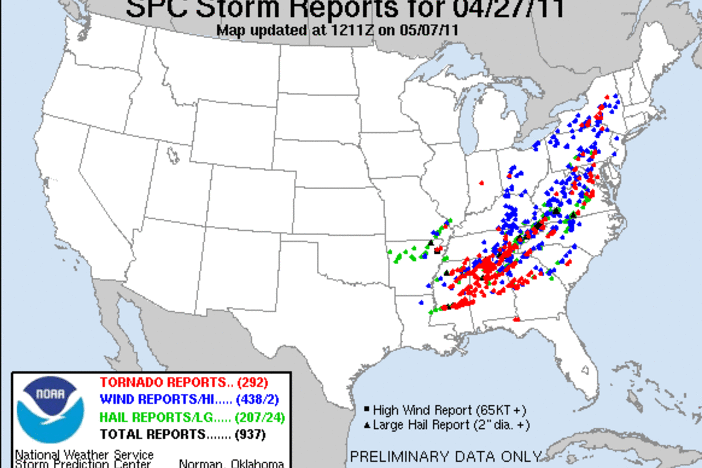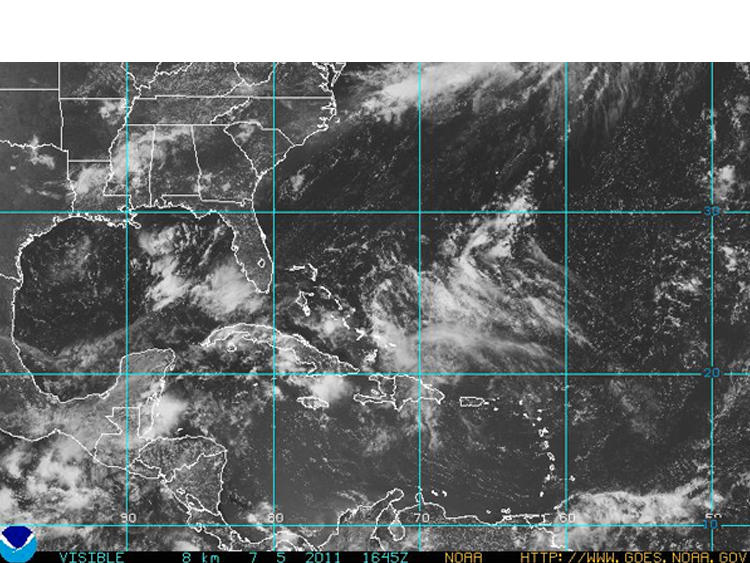
Section Branding
Header Content
If A Storm Brews In The Tropics, Is It Really A Tropical Storm?
Primary Content

In my previous post about Tropical Storm Arlene, I mentioned that before Arlene had become classified as a storm, she was first a tropical disturbance and later a tropical depression. I also admitted that keeping up with all of the types of tropical weather features can get rather confusing. By the end of this post, I hope to clear the fog of misconception regarding the classification of tropical weather.
First, any area of low pressure near the surface of the Earth is called a “cyclone” because air spins in a cyclonic motion around the center of the low (in North America, cyclonic air flow is seen as a counter-clockwise motion around the low). There are many different cyclones all over the earth – a great big storm producing snow over the Great Lakes is called a “mid-latitude cyclone.” A nor’easter racing up the Atlantic seaboard is another type of mid-latitude cyclone. In the tropics, any low pressure system with tropical features is called a “tropical cyclone.”
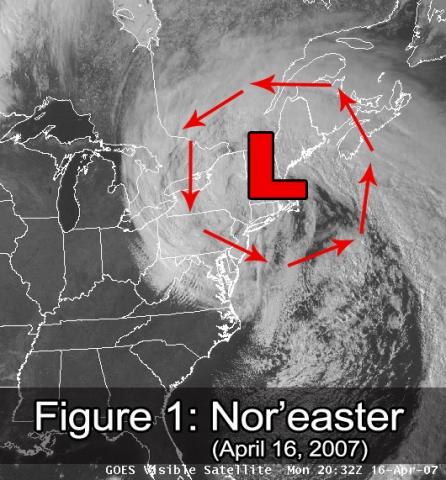
Figure 1: A nor'easter located over New Hampshire. Note that winds flow counterclockwise around the storms.
So would any cluster of storms in the Gulf of Mexico be considered as a “tropical cyclone”? Not necessarily.
In order for a region of thunderstorms to be considered tropical, they must be considered a “warm core” or “barotropic” system. A warm core system means that the thunderstorm activity is only fueled by the thermodynamics (including the latent heat release) within the storms.
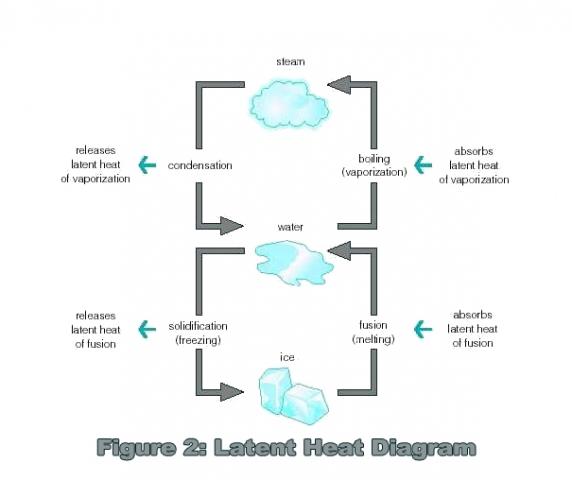
Figure 2: A diagram explaining the flow of latent heat during water's phase changes. When water vapor condenses into liquid cloud droplets, it releases "hidden," or "latent" heat into the surrounding atmosphere.
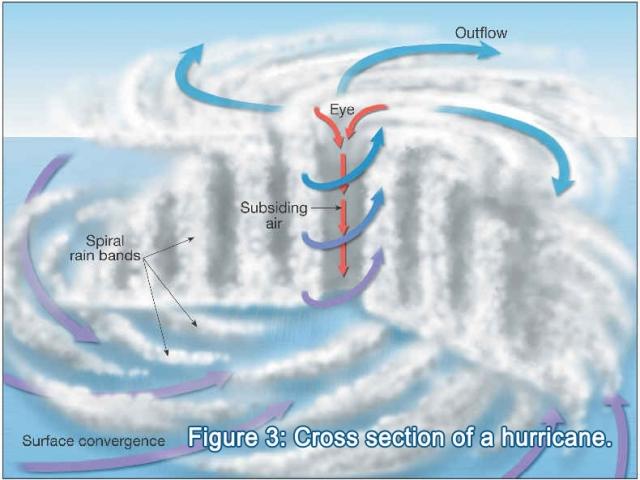
Figure 3: A diagram showing the cross section of a hurricane. Latent heat release within the storm continues to "fuel" the hurricane, making it a "warm core" or barotropic system.
However, most thunderstorms are generated by cyclones that have baroclinic, or thermal and pressure gradient properties (for example, mid-latitude cyclones exhibit baroclinicity). Baroclinic cyclones are considered “cold core” systems, and they are responsible for the passage of warm and cold fronts – therefore, “cold core” thunderstorms in the tropics that were generated by a cold front would not be considered tropical activity.
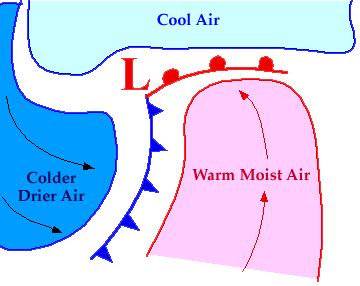
Figure 4: A diagram showing the schematics of a mid-latitude cyclone. As wind swirls counterclockwise around the low, warm and moist air flows ahead of the low while cold and dry air flows behind the low.
The second property that separates a smattering of thunderstorms from the “tropical cyclone” classification is the presence of a “closed circulation.” On a map showing the surface pressure, there are many lines that delineate areas of equal pressure – these are called isobars. Many times, the isobars form waves that never connect into a complete circle. In a tropical cyclone, the isobars indeed connect into concentric rings – this is an area of “closed circulation.”
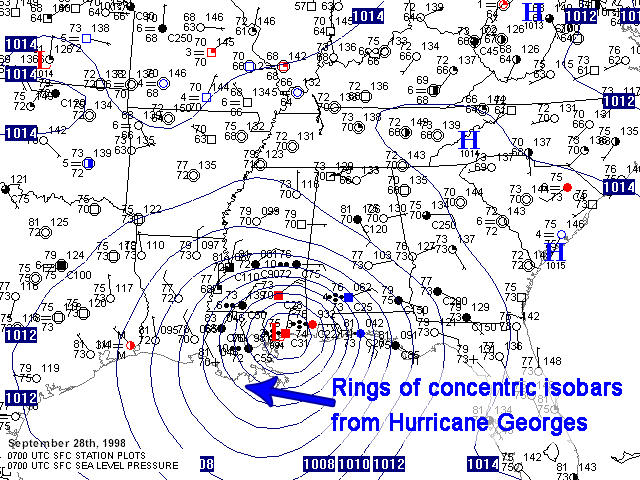
Figure 5: The surface pressure map from September 28, 1998, as Hurricane Georges made landfall over the northern Gulf Coast. Notice how the isobars, or lines of equal pressure, join together into concentric rings. This is an indication of a storm with "closed circulation."
To recap, any low pressure system that exhibits tropical properties and a closed circulation is called a “tropical cyclone.” The term “tropical cyclone” can be used to describe tropical depressions, tropical storms, and hurricanes. In my next post, I will describe the individual characteristics of each type of tropical cyclones.
Related Posts You May Like
Tropical Disturbances, Depressions, and Storms: Oh My!
First Tropical Storm of the 2011 Season: Arlene
Tour Through The Hurricane Hunters' Airplane!
In my previous post ab



